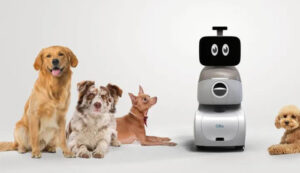February is designated by the American Veterinary Medical Association as National Pet Dental Health Month. As I do every year, I want to spend some time discussing this very important subject. The American Veterinary Dental Society (AVDS) reports that 80% of dogs and 70% of cats show signs of oral disease by the time they are only three years old! In fact, disease of the teeth and gums are the most common health problems seen in small animal veterinary hospitals (statistics provided by the pet health insurance industry).
“Doggie breath” is the first stage of dental disease in pets. This results from an accumulation of tartar and plaque near the gums, a condition called gingivitis. Red lines along the edges of the teeth instead of the normal, healthy bright pink color, signifies the beginning of gingivitis.
When diagnosed early, gingivitis, which is a bacterial infection of the pet’s gums, can be treated. If left untreated, the bacteria begin to move under the gum line, where they infect the teeth at their roots. This can lead to pyorrhea, or periodontitis. At this advanced stage, there is gum recession and loosening of the teeth. A thorough dental exam and cleaning is the cornerstone of properly treating gingivitis in the early stages.

Treatment of advanced or severe periodontal disease may involve extractions of teeth that have become infected, antibiotics as needed to help control the infection and pain medication (dental disease can be extremely painful). If left untreated, the bacterial infection can spread to the bone where it causes osteomyelitis (bone infection) in the jaw. Ultimately, the infection can enter the bloodstream where the bacteria may cause damage to the liver, heart and kidneys.
Veterinarians use an ultrasonic scaler to clean your pet’s teeth, a process very similar to that done in humans. As in people, dental X-rays are the gold standard and should be taken whenever a pet dental cleaning is performed. X-rays are needed to evaluate the crowns and the tooth roots. It is necessary to put the patient under a general anesthetic for a proper dental procedure to allow cleaning and X-rays. With proper health screening, anesthesia is safe, and any potential risks far outweigh the danger of leaving a diseased mouth untreated.
As important as the cleaning, the teeth need to be polished after the cleaning process. Polishing removes micro scratches in the enamel that predisposes the teeth to future dental tartar and plaque build up. Make sure to ask your veterinarian if he or she polishes the teeth with every dental cleaning. If not, find a veterinarian that does.
Of course, prevention is always better than treatment. You can avoid dental procedures if you make a regular practice of brushing your pet’s teeth at home. Though not as effective as a periodic professional cleaning, keeping your pet’s teeth cleaned by brushing will greatly improve the health of their teeth and gums. Brushing the teeth is simple and takes only a few minutes. Your veterinarian can teach you how to train your pet to allow brushing — including cats! There are also several great videos on YouTube that demonstrate how to brush your pet’s teeth.
5 sweet signs your dog feels safe with you
1. Initiating Physical Contact
If you’re wondering if your dog feels secure when he’s with you, and he’s resting his head on your lap while you read this, he feels safe and sound—it’s that simple.
According to Dr. Lopez, “Dogs that actively seek physical contact by leaning against you, nudging you or placing a paw on your lap are expressing a desire for closeness and connection.”
2. Playfulness and Excitement
While you may be annoyed by the incessant squeaking of that infernal rubber chicken toy you bought for Buster, if he’s playing with it in your presence, it’s a good thing.
“A dog that engages in playful behavior, such as bounding around, play-bowing, and bringing you toys, is demonstrating a sense of comfort and happiness in its owner’s presence,” Dr. Lopez explains.
3. Eating Comfortably
“Dogs that feel safe will eat their meals without hesitation or anxiety,” she continues. “A relaxed mealtime indicates trust in the environment and assurance that their owners will provide for their needs.”
4. Wags Its Tail Around You
We already mentioned that dogs and humans don’t share a common language, but that doesn’t mean dogs can’t communicate with us. They can and do!
“Dogs communicate through body language, and a wagging tail is a clear indicator of joy and comfort,” Dr. Lopez says. “It’s essential to recognize the nuances in tail wagging, as the speed and height of the wag can convey different emotions. A very friendly dog may wag his tail more freely and even wiggle his hips at the same time. This joyful and relaxed tail wag signifies a positive association, indicating that your dog feels secure and happy in your presence.”
5. The Sounds They Make
If you’re a first-time dog owner, you’re probably painfully aware of the loudest way a dog communicates, and you might already be trying to train yours to lower the volume a notch or ten.
“Dogs communicate through barking, and a lack of barking in your presence suggests a sense of ease and security,” Dr. Lopez explains. “Happy dogs may have higher-pitched barks and bark for shorter durations than agitated dogs. Some dogs vocalize with a soft, contented whine when they feel safe. However, it’s important to note that this gentle vocalization is different from anxious or distressed whining.”
In the end, Dr. Lopez emphasizes that it’s not enough for us simply to listen to our dogs to assess whether they feel safe or not.
“It’s crucial not to judge your dog solely by their vocalizations,” she says. “Consider other signs, such as their overall body language, to accurately gauge their emotional state before assuming everything is well.”







